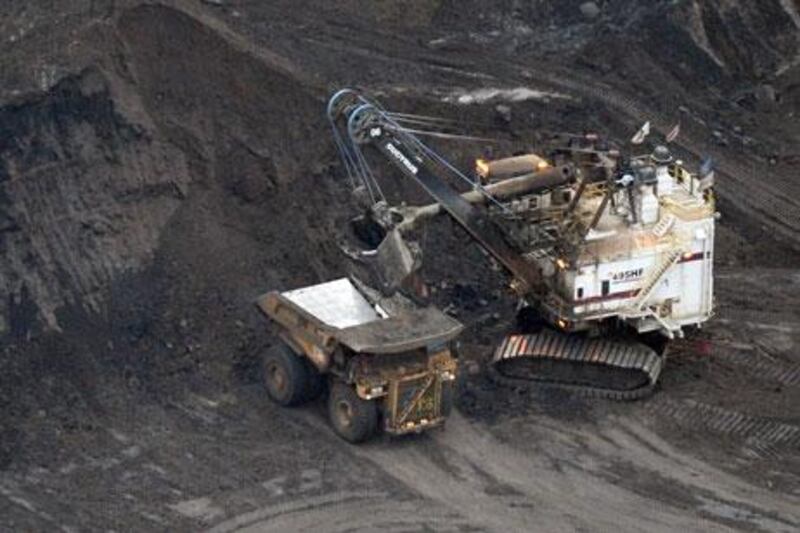Sir Richard Branson, the British tycoon, said at the opening of the Cancun talks on climate change last week: "The next five years will see us face another crunch - the oil crunch."
He predicted that prices, now about US$90 per barrel, would hit $200. "Our supplies of … oil and natural gas are being rapidly depleted and many of the great fields are already exhausted," said another prominent conservationist.
But this conservationist was the pioneering American Gifford Pinchot, writing a century ago. Warnings of oil depletion have come and gone with monotonous regularity: "The amazing exhibition of oil [is] a temporary and vanishing phenomenon - one which young men will see to come to its natural end,"Pennsylvania's state geologist observed in 1885.
The post-First World War "gasoline crisis" in the US was followed by a 1956 prediction by M King Hubbert, a Shell geologist, that world oil extraction would start declining by the year 2000. Dr Colin Campbell, another geologist, wrote in 1989 that production was about to reach its peak - global output is now 16 million barrels per day (bpd) higher.
Of course, the boy who cried wolf was eventually eaten by one. But the current generation of doomsayers, often not oil professionals, have neither addressed reasons for so many incorrect predictions of apocalypse, nor explained why this time their warnings are any more credible.
The oil market is indeed structurally tight - for good reasons, it is difficult to increase production quickly to meet unexpectedly fast demand growth.
OPEC nations have substantial spare capacity but some major players, such as Venezuela, Iran and Nigeria, have struggled with declining output over the past few years, mainly due to internal political and security problems. This has essentially put control in the hands of Saudi Arabia, which has been happy to make only measured increases in output, more or less in line with non-OPEC growth.
Combine this with stretched refining capacity, which made refiners scramble for every extra barrel of valuable light crude in the face of Chinese preparation for the Olympics, and we have the explanation for the record price of $147 per barrel reached in July 2008.
This situation may well be repeated over the next few years. As new figures from the International Energy Agency reveal, the surging Chinese economy, a snowbound Europe and the US Federal Reserve's quantitative easing programme have combined to cause the recent price rally.
But a number of major non-OPEC producers, notably Brazil and Kazakhstan, are set for major production gains. BG, the global oil and gas company based in the UK, is a partner in Brazil's giant Tupi field and estimates that development and production there will cost just $14 per barrel. If all-in costs of $14 per barrel for 5 billion barrels or more of reserves are not easy oil, what is?
Meanwhile, new technology and investment-friendly policies in mature oil producers such as Oman and Colombia have reversed apparently terminal decline.
Unconventional oil output, such as that from fractured shale rocks in the US and the sticky bitumen from Canada's famous oil sands, inches up remorselessly. Frontier exploration has uncovered large fields in Africa and holds promise in new areas, such as Greenland.
And Boston Consulting Group recently predicted that advanced biofuels, made from waste and non-food crops, could be cost-competitive with petroleum even before 2020, while due to new additions in Asia and the Middle East, refinery capacity is now ample.
On the OPEC side, there is the conundrum of Iraq. Analysts are almost unanimous that logistics and insecurity will prevent the country reaching its target of 12.5 million bpd by 2017, from the current 2.36 million bpd.
But early news from the contracts awarded to major foreign companies such as ExxonMobil, BP and ENI is positive and it seems entirely plausible that Iraq could get halfway to its goal.
If Iraq were to seek steep gains in market share, as Saudi Arabia did in the late 1980s and Venezuela in the 1990s, then OPEC cohesion would be threatened, potentially forcing other members - notably Saudi Arabia, Abu Dhabi and Kuwait - into increasing their own production in response.
So, it is possible that the market will be tight over the next few years but there are also credible scenarios for significant growth in supply. Barring a major upset such as a war or revolution in a big exporter, the crisis foretold by Sir Richard is implausible.
Beyond that, a still convalescing global economy, high prices, energy security concerns and tackling climate change will put a tightening squeeze on demand. Oil consumption in developed countries has probably already reached its maximum.
The consultancy PFC foresees Chinese gasoline use declining after the mid-2020s, with increasing use of hybrid and electric cars.
And the modern, oil-efficient, low-inflation world economy is much better placed to weather a shortfall than in the 1970s - as long as the failed policies of that era, such as rationing, price controls, energy subsidies and windfall taxation - are not repeated. It is thus ironic that some "peak oil" prophets advocate such measures.
So, while repeated warnings of the exhaustion of oil resources have come and gone without result, we can foresee an entirely new situation within the next two decades: a peak in demand.
That is much more frightening for the Middle East - promising a protracted period of falling oil prices and struggles over dividing a shrinking cake.
In all the warnings about imaginary wolves, we have to be careful not to miss the real one.
Robin M Mills is an energy economist based in Dubai and the author of The Myth of the Oil Crisis and Capturing Carbon





